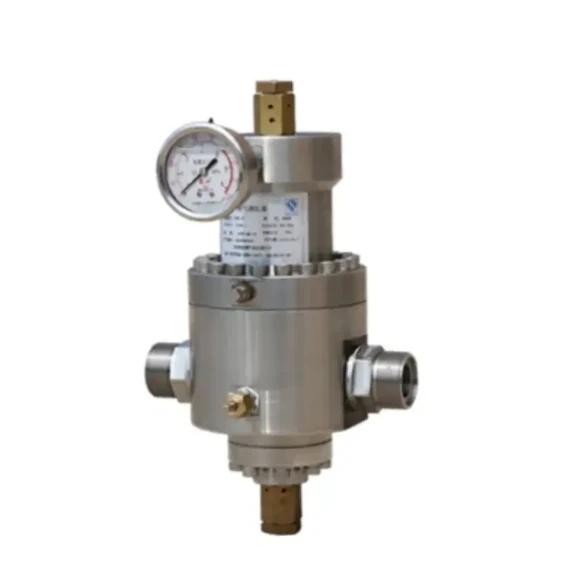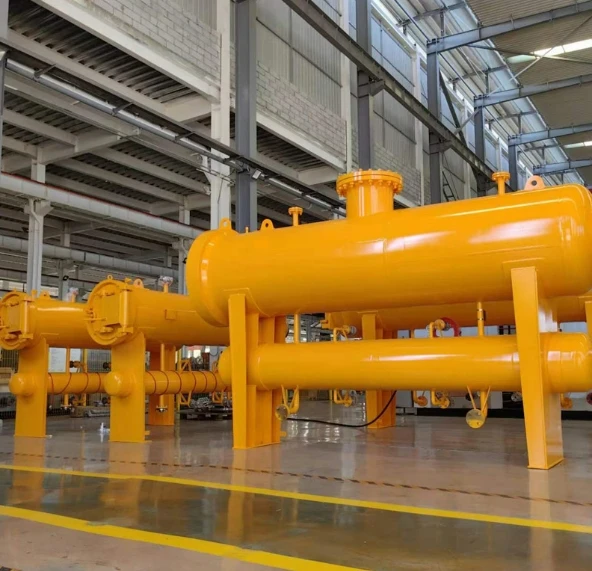
Jul . 07, 2025 06:54
Back to list
High-Efficiency Heat Exchanger for Industrial Use Reliable Gas & Natural Gas Heat Exchanger Solutions
- Introduction to Heat Exchanger Technology
- Comprehensive Overview and Working Principle
- Technical Advantages and Performance Metrics
- Manufacturer Comparison and Market Data
- Tailored Solutions and Custom Designs
- Real-World Application Scenarios
- Summary and Future Trends of Heat Exchanger

(heat exchanger)
Introduction to Modern Heat Exchanger Solutions
In the evolving sphere of industrial engineering and climate control, heat exchanger
systems stand as pivotal technologies for energy transfer and process optimization. Their essential role spans countless applications—ranging from power generation and chemical processing to residential and commercial HVAC systems. Recent market studies indicate that the global heat exchanger sector was valued at USD 16.2 billion in 2022, with projections suggesting growth to USD 24.3 billion by 2030, reflecting a robust CAGR of 5.3%. This dynamic expansion is fuelled by intensified energy efficiency standards and a sharp increase in demand for gas heat exchanger installations across diverse industries.
As environmental consciousness intensifies and regulations become stricter, the application of natural gas heat exchanger technology has become an industry benchmark. Innovations in material science, design architectures, and thermal modeling have driven remarkable improvements in operational reliability, heat transfer rates, and lifecycle costs. By delving deeper into the components, working principles, and practical implications, one can unlock new levels of understanding about the pivotal role of these technologies in today’s energy landscape.
Working Principle and Comprehensive Overview
Heat exchangers function based on the fundamental thermodynamic principle of transferring heat from a hotter fluid to a cooler one, without the two streams mixing. Various types dominate the market, including shell-and-tube, plate, finned-tube, and more advanced coil designs. Gas heat exchangers, in particular, are engineered to maximize thermal conductivity for gaseous media, making them essential for processes involving combustion gases or heat recovery from exhaust streams.
The effectiveness of a heat exchanger is determined by its configuration (co-current, counter-current, cross-flow), heat transfer coefficient, surface area, flow velocity, and fouling resistance. For natural gas heat exchanger installations, it's crucial to ensure compatibility with methane-content, pressure thresholds, and built-in safety mechanisms to accommodate fluctuating operational conditions.
Notably, the application of advanced computational simulations has made it possible to predict temperature profiles, optimize pressure drops, and tailor geometries for specific requirements. Compared to traditional solutions, modern units can minimize heat loss by as much as 20% while sustaining high throughput, directly translating into significant energy and cost savings.
Technical Advantages and Performance Metrics
The adoption of state-of-the-art heat exchanger solutions brings several quantifiable performance benefits. For instance, using high-efficiency finned tubes or microchannel designs can improve overall heat transfer rates by up to 30%. The average log mean temperature difference (LMTD) values achieved in modern systems have been recorded at 10-15% higher efficiency than legacy units.
Furthermore, advancements in anti-corrosive materials, such as titanium alloys and polymer composites, have doubled the expected service life of many commercial models. Robust self-cleaning mechanisms have slashed maintenance intervals by 40%, significantly reducing total cost of ownership (TCO). In terms of environmental stewardship, the integration of optimized natural gas heat exchanger systems in commercial HVAC infrastructure has led to documented annual CO2 emission reductions of up to 18,000 metric tons for large-scale facilities.
Below is a comparative performance table highlighting key technical metrics:
| Attribute | Modern Plate Heat Exchanger | Gas Heat Exchanger | Traditional Shell-and-Tube |
|---|---|---|---|
| Heat Transfer Coefficient (W/m²K) | 2,800 – 5,000 | 1,500 – 3,000 | 900 – 1,800 |
| Typical Operational Lifespan (years) | 20–25 | 15–20 | 10–15 |
| CO2 Emissions Saved/year (metric tons) | Up to 14,000 | Up to 18,000 | Up to 8,000 |
| Maintenance Interval (months) | 12 | 12 | 6 |
| Space Footprint (m² per MW) | 4.0 | 6.0 | 10.0 |
Manufacturer Comparison and Market Data
The heat exchanger marketplace is populated by several leading manufacturers competing on quality, innovation, and service offering. Key players include Alfa Laval, Kelvion, Xylem, API Heat Transfer, and Tranter. A recent industry report listed Alfa Laval with a 15% market share, driven by continual innovation in compact and modular units targeting energy and industrial sectors. Kelvion follows with 12%, focusing on custom-engineered plate and fin technology, while Tranter specializes in welded and gasketed plate exchangers ideal for corrosive and high-pressure environments.
Beyond brand reputation, selection criteria often hinge upon technical support capability, global supply chain resilience, and after-sales commitment. For instance, Xylem is recognized for rapid deployment and turnkey solutions, API Heat Transfer excels in process-specific customization, and Kelvion offers patented antifouling solutions for high-particulate environments. Each manufacturer’s research and development investment correlates strongly with their capacity for innovation and delivery of sustainable, high-efficiency heat exchanger platforms.
The table below offers a snapshot of recent market statistics and primary focus areas:
| Manufacturer | Global Market Share (%) | Main Product Focus | R&D Investment (USD million) |
|---|---|---|---|
| Alfa Laval | 15 | Plate & Frame, Gas Exchanger | 160 |
| Kelvion | 12 | Plate & Fin, Custom Solutions | 88 |
| Xylem | 10 | Compact, Rapid Deployment | 94 |
| API Heat Transfer | 9 | Process Optimization | 67 |
| Tranter | 8 | High-Pressure, Corrosive Applications | 55 |
Tailored Solutions and Custom Designs
No heat exchanger application is entirely generic; industry-specific challenges demand tailored engineering. Custom solutions start with a comprehensive evaluation of thermal loads, pressure differentials, spatial constraints, and media compatibility. In natural gas heat exchanger deployments, for example, corrosion resistance, condensation control, and energy recovery efficiencies are carefully balanced with operational safety requirements.
Modular assemblies allow for scalability, enabling phased capacity increases as demand evolves. Advances in digital prototyping—such as CFD (Computational Fluid Dynamics) and FEA (Finite Element Analysis)—enable manufacturers to simulate temperature gradients and pressure distributions under real-world conditions, resulting in more precise specification and optimized performance. This approach ensures clients receive a purpose-built solution that minimizes downtime, reduces environmental impact, and provides maximum return on investment.
Furthermore, plug-and-play integrations are increasingly standard. These configurations facilitate rapid commissioning and easy expansion of process lines, particularly in industries with shifting production demands or regulatory pressures.
Real-World Application Scenarios
The versatility of the modern heat exchanger is evident across industries. In the energy sector, combined-cycle gas turbine plants utilize recuperative gas heat exchangers to boost thermal efficiency, resulting in fuel savings of up to 7% and emissions reductions. Food and beverage manufacturing plants rely on plate heat exchangers for rapid pasteurization and sanitation with minimal cross-contamination risk.
In district heating systems, advanced natural gas heat exchanger units have enabled multi-megawatt heat transfer for urban residential and commercial complexes, achieving annual energy savings of up to 16%. Chemical and pharmaceutical processing facilities deploy custom heat exchangers for vapor condensation and clean-in-place (CIP) systems, where uptime and sterility are critical.
A notable case study includes a Scandinavian hospital complex where installing high-efficiency plate heat exchangers reduced hot water consumption costs by 13% annually while improving patient comfort and system uptime. These examples are a testament to the wide adaptability and transformative impact of this technology.
Summary and Outlook for the Heat Exchanger Industry
The trajectory of heat exchanger innovation continues to shape the fabric of industrial and commercial energy efficiency. With growing investments in research, a strong push for decarbonization, and the rise of digital design tools, the next generation of solutions promises even greater breakthroughs in reliability, compactness, and operational intelligence.
Looking forward, adaptation to emerging refrigerants, integration with smart control systems, and the pursuit of complete lifecycle sustainability will become defining factors for manufacturers and end-users alike. Regulatory landscapes are likely to further favor highly efficient and adaptable systems, solidifying the heat exchanger as a cornerstone in the global movement toward greener and smarter infrastructure.

(heat exchanger)
FAQS on heat exchanger
Q: What is a heat exchanger?
A: A heat exchanger is a device designed to efficiently transfer heat from one fluid to another without mixing them. It is widely used in heating, cooling, and refrigeration systems.Q: How does a gas heat exchanger work?
A: A gas heat exchanger transfers thermal energy from hot gases to either air or another fluid. This is commonly used in HVAC systems and industrial heating processes.Q: Where are natural gas heat exchangers commonly used?
A: Natural gas heat exchangers are frequently used in boilers, furnaces, and water heaters. They help improve efficiency by recovering heat from natural gas combustion.Q: What are the benefits of using a heat exchanger?
A: Heat exchangers enhance energy efficiency, reduce operational costs, and lower emissions. They are essential in various industries for effective thermal management.Q: How do you maintain a heat exchanger?
A: Regular cleaning and inspection prevent fouling and corrosion, ensuring optimal performance. Maintenance schedules vary by type and application.Latest news
-
What Role Do Pressure Reducers Play in Industrial Systems?NewsJun.12,2025
-
What Role Do Gas Valves Play in Industrial Safety and Functionality?NewsJun.12,2025
-
Key Components in Energy Management and Temperature ControlNewsJun.12,2025
-
Integral Components in Mechanical and Energy SystemsNewsJun.12,2025
-
How Do Industrial Valves and Filters Ensure System Safety and Efficiency?NewsJun.12,2025
-
Essential Components for Industrial Fluid Management: Valves and SystemsNewsJun.12,2025

